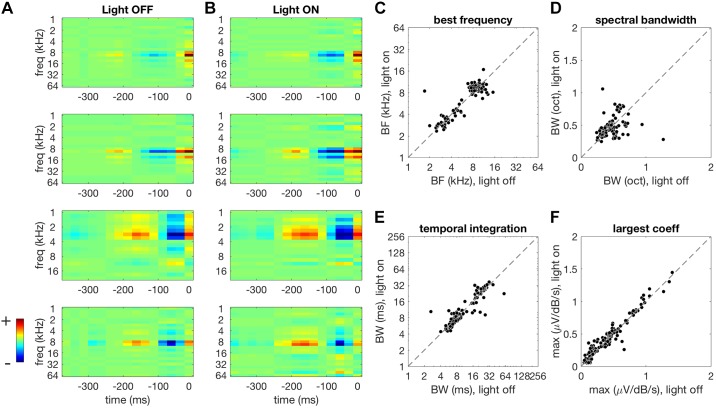Fig. 4.
Effect of PVI suppression on STRF shape. A: example STRFs estimated for the light-off condition. Spectrotemporal features that increase the MUA amplitude are shown in warmer colors while suppressive features are shown in cooler colors. B: STRFs estimated for the same MUAs as in A, but under light-on conditions during Arch-mediated PVI suppression. Color scaling is the same as in A. This manipulation results in a small increase in peak STRF coefficient. STRFs had similar shapes under light-off and light-on conditions (A and B). C–F: comparison of STRF parameters under light-off (abscissa) versus light-on (ordinate) conditions. A small but significant change was observed in best frequency (C) under light-on conditions. The bandwidth of frequency tuning (D) and temporal integration window (E) remained unaffected. The largest STRF coefficient increased during PVI suppression (F). Arch, archearhodopsin; BF, best frequency; BW, bandwidth; MUA, multiunit activity; PVI, parvalbumin-positive interneurons; STRF, spectrotemporal receptive fields.

